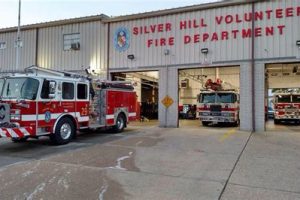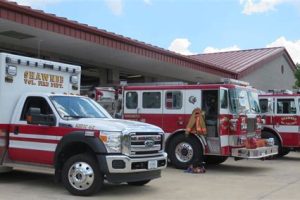Table of Contents
Discover the latest volunteer fire department statistics and trends. Gain insights into the number of volunteers, response times, incidents handled, and more. Stay informed about the challenges faced by these brave individuals who selflessly protect our communities. Explore the data and support your local fire department today!
Volunteer fire departments, an essential pillar of our communities, are often the unsung heroes who selflessly protect lives and property. When it comes to understanding the scope and impact of these remarkable organizations, statistics play a pivotal role. With jaw-dropping figures that shed light on their remarkable achievements, volunteer fire department statistics provide undeniable evidence of their dedication and bravery. From the number of lives saved to the countless hours spent training and responding to emergencies, these figures paint a vivid picture of the vital role these volunteers play in keeping our neighborhoods safe. So, let’s delve into the compelling world of volunteer fire department statistics to gain a deeper appreciation for the extraordinary work they do every day.
Introduction
Volunteer fire departments play a critical role in ensuring the safety and well-being of communities across the country. These dedicated men and women selflessly devote their time, energy, and expertise to protect lives and property during emergencies. Understanding the statistics related to volunteer fire departments can provide valuable insights into their contributions and challenges. Let’s delve into some key statistics that shed light on the remarkable work done by these brave volunteers.
Rise of Volunteer Fire Departments
In the United States, volunteer fire departments have a long-standing tradition dating back to the colonial era. Today, they continue to thrive and make up the majority of all fire departments. According to the National Fire Protection Association (NFPA), approximately 70% of fire departments in the country consist entirely of volunteers.
Volunteer Recruitment and Retention
Recruiting and retaining volunteers is essential for the sustainability of these departments. However, it is not always an easy task. Many volunteer fire departments face challenges in attracting new members due to various factors such as demanding time commitments and strenuous training requirements. As a result, maintaining a stable volunteer base becomes a priority for these organizations.
Volunteer Firefighter Demographics
Volunteer firefighters come from diverse backgrounds and professions. According to a survey conducted by the NFPA, the majority (87%) of volunteer firefighters are male, while only 13% are female. Additionally, the average age of volunteers is steadily increasing, with many individuals joining after retirement from other careers.
Emergency Response Capabilities
While volunteer fire departments may face challenges due to limited resources, they continue to provide crucial emergency response services. These departments respond to a wide range of incidents, including structure fires, medical emergencies, hazardous material incidents, and natural disasters. Their training and dedication enable them to effectively handle these situations despite potential constraints.
Contributions to Fire Prevention
Volunteer fire departments not only respond to emergencies but also contribute significantly to fire prevention efforts. They conduct fire safety education programs for communities, schools, and businesses to raise awareness about fire hazards, prevention measures, and emergency preparedness. These prevention initiatives play a vital role in reducing the incidence and impact of fires.
Funding Challenges
One of the significant challenges faced by volunteer fire departments is funding. Unlike their career counterparts, these departments often rely on community donations, grants, and fundraisers to cover expenses related to equipment, training, and maintenance. Limited financial resources can hinder their ability to provide optimal services and maintain adequate infrastructure.
Volunteer Fire Department Response Time
Response time is a critical factor in emergency situations. Volunteer fire departments strive to minimize response times, as every second counts. However, due to factors such as distance, traffic, and the availability of volunteers, response times can vary. It is essential for these departments to continually evaluate and improve their response capabilities to provide timely assistance.
Volunteer Fire Department Training
Training is a cornerstone of volunteer fire departments, ensuring that volunteers possess the necessary skills and knowledge to handle emergencies effectively. These departments adhere to rigorous training standards set by national and state organizations. Volunteers undergo extensive training in areas such as fire suppression, emergency medical services, hazardous materials response, and incident command.
Recognition and Appreciation
The commitment and sacrifices made by volunteer firefighters deserve widespread recognition and appreciation. Their dedication to serving their communities often goes unnoticed. It is crucial for society to acknowledge and express gratitude for their invaluable contributions. Recognizing their efforts can help motivate and inspire others to consider volunteering in this noble profession.
The Future of Volunteer Fire Departments
Looking ahead, the future of volunteer fire departments depends on various factors, including community support, recruitment strategies, and access to adequate resources. As the landscape of emergency response evolves, it is essential to ensure the sustainability and effectiveness of volunteer fire departments, so they can continue serving and protecting communities for generations to come.
The Importance of Volunteer Fire Departments in Communities
Volunteer fire departments play a vital role in ensuring the safety and well-being of communities in rural areas. With limited resources, these selfless volunteers bravely protect lives, properties, and the environment from the devastating effects of fires, accidents, and natural disasters.
A Closer Look at Volunteer Fire Departments and Their Response Times
Understanding the response times of volunteer fire departments is crucial in assessing their effectiveness. Despite the challenges faced by these dedicated volunteers, they strive to respond promptly to emergencies and minimize the potential damage caused by fires, providing invaluable support to their communities.
Volunteer Fire Department Funding and Personnel
The Financial Struggles Faced by Volunteer Fire Departments
Volunteer fire departments often grapple with financial difficulties due to limited funding resources. These dedicated groups rely heavily on the generosity of their communities, grants, and fundraising efforts, highlighting the imperative need for ongoing financial support to maintain their essential services.
Volunteer Fire Departments: A Glimpse into Their Personnel Structure
Understanding the composition of volunteer fire department personnel sheds light on the challenges faced by these everyday heroes. Comprised of volunteers from diverse backgrounds and skill sets, these individuals undergo rigorous training to ensure they are equipped with the necessary skills to respond to emergency situations effectively.
Fire Incident Rates and Volunteer Fire Departments
Volunteer Fire Departments: Battling Fire Incidents in Communities
Fire incident rates provide valuable insights into the frequency and severity of fires in communities and emphasize the significant role played by volunteer fire departments in combating these emergencies. Despite potentially limited resources, these brave individuals work tirelessly to protect lives and property from the ravages of fire.
The Impact of Volunteer Fire Department Response Times on Fire Outcomes
The response time of volunteer fire departments can have a profound impact on the outcome of fire incidents. Timely arrival at the scene enables these dedicated volunteers to quickly extinguish fires, potentially saving lives, minimizing property damage, and ensuring the safety of the community they serve.
Volunteer Fire Departments’ Challenges and Contributions
The Unique Challenges Faced by Volunteer Fire Departments
Volunteer fire departments face numerous challenges, including balancing their demanding volunteer work with other professional and personal commitments. Despite these hurdles, they continue to serve as the backbone of many communities, selflessly dedicating their time and expertise to protect and assist those in need.
Recognition of Volunteer Fire Departments’ Contributions to Society
It is crucial to acknowledge and appreciate the immense contributions made by volunteer fire departments to society. Their selflessness, bravery, and unwavering dedication ensure the safety and well-being of countless individuals and communities, making them an integral part of our emergency response system.
Volunteer Fire Department Statistics:
- Volunteer fire departments play a crucial role in ensuring the safety and well-being of communities across the nation.
- According to recent statistics, there are approximately 30,000 volunteer fire departments in the United States.
- These departments are staffed by dedicated individuals who selflessly give their time and effort to protect their neighbors and property from the devastation of fires.
- The statistics reveal that volunteer firefighters make up the majority of the firefighting force in rural areas, where professional departments may not be feasible due to budget constraints.
- In fact, it is estimated that around 70% of all firefighters in the country are volunteers.
- These numbers highlight the invaluable contribution of volunteers in safeguarding communities and saving lives.
- Furthermore, the statistics indicate that volunteer fire departments respond to more than 70% of all fire-related emergencies in rural areas.
- This demonstrates their vital role in providing immediate assistance during critical situations, often before professional firefighters can arrive at the scene.
- Additionally, volunteer fire departments also extend their services beyond firefighting.
- They often provide medical aid, rescue operations, and assistance during natural disasters or other emergencies.
- These statistics underscore the versatility and adaptability of volunteer firefighters, who are trained to handle a wide range of situations.
- Despite their immense contribution, volunteer fire departments face numerous challenges.
- One significant challenge is recruiting and retaining volunteers.
- The statistics reveal a decline in the number of volunteer firefighters over the years, mainly due to demographic shifts and an increase in alternative career opportunities.
- This decline poses a significant concern for the future of volunteer fire departments, as maintaining adequate staffing levels becomes increasingly difficult.
- Efforts must be made to raise awareness about the importance of volunteering and to encourage community members to join their local fire departments.
- Ultimately, the statistics surrounding volunteer fire departments emphasize their indispensable role in safeguarding communities and highlight the need for continued support and recognition of these brave individuals.
Thank you for taking the time to read our blog post on Volunteer Fire Department Statistics. We hope that this information has provided you with valuable insights into the crucial role that volunteer firefighters play in our communities. In this closing message, we would like to summarize the key points discussed in the article and emphasize the importance of supporting and appreciating these brave individuals.
Firstly, we highlighted the significant contribution made by volunteer firefighters to public safety. These dedicated men and women selflessly give their time and effort to protect lives and property during emergencies. They undergo extensive training to ensure that they are well-prepared to handle various situations, from tackling fires to responding to medical emergencies. Without their commitment and bravery, many communities would be at a greater risk when disaster strikes.
Secondly, we shed light on the challenges faced by volunteer fire departments across the country. One of the most pressing issues is the shortage of volunteers. As our society becomes increasingly busy and demanding, the number of individuals willing and able to dedicate their time to firefighting has dwindled. This shortage puts a strain on existing volunteers, who often have to juggle their regular jobs or other commitments alongside their firefighting duties. It is crucial that we recognize this issue and take steps to address it, whether through recruitment drives, improved incentives, or increased community support.
Lastly, we discussed the need for continued support and appreciation for volunteer firefighters. These individuals sacrifice their own safety and wellbeing to protect others, often without any expectation of recognition or reward. It is important for us, as members of the community, to show our gratitude and support in any way we can. Whether it’s making a donation to your local volunteer fire department, volunteering your own time, or simply saying thank you to a firefighter you encounter, every gesture counts. Together, we can make a difference and ensure that these brave individuals feel valued and motivated to continue their vital work.
In conclusion, volunteer firefighters are the unsung heroes of our communities. Their selflessness, dedication, and bravery deserve our utmost respect and support. By understanding the statistics surrounding volunteer fire departments and the challenges they face, we can work towards ensuring their continued success and safety. Let us all join hands in appreciating and supporting these remarkable individuals who protect us when we need them the most.
.
Below are some frequently asked questions about Volunteer Fire Department Statistics:
1. How many volunteer fire departments are there in the United States?
According to the latest available data, there are approximately 30,000 volunteer fire departments across the United States.
2. What percentage of firefighters are volunteers?
Volunteer firefighters make up a significant portion of the overall firefighting force in the United States. It is estimated that around 70% of all firefighters in the country are volunteers.
3. How many volunteer firefighters are there nationwide?
The exact number of volunteer firefighters can vary from year to year, but recent statistics show that there are over 800,000 volunteer firefighters serving in different communities throughout the United States.
4. What is the average response time for volunteer fire departments?
Response times may vary depending on the specific circumstances and location, but volunteer fire departments strive to provide quick and efficient emergency responses. On average, volunteer fire departments aim to arrive at the scene within 6 to 8 minutes after receiving a call for assistance.
5. How do volunteer fire department statistics compare to those of professional fire departments?
Volunteer fire departments play a vital role in providing firefighting services, especially in rural areas where professional departments may be limited. While professional departments often have larger budgets and more resources, volunteer departments contribute significantly to the overall firefighting efforts in the country.
6. Are there any trends or changes in volunteer fire department statistics over the years?
Over the years, there has been a slight decline in the number of volunteer firefighters, mainly due to factors such as an aging population and increased demands on individuals’ time. However, many communities continue to rely on the dedication and commitment of volunteer firefighters to ensure public safety.
These are just a few of the common questions people have regarding Volunteer Fire Department Statistics. If you have any further inquiries, do not hesitate to reach out to your local fire department or relevant authorities for more detailed information.






